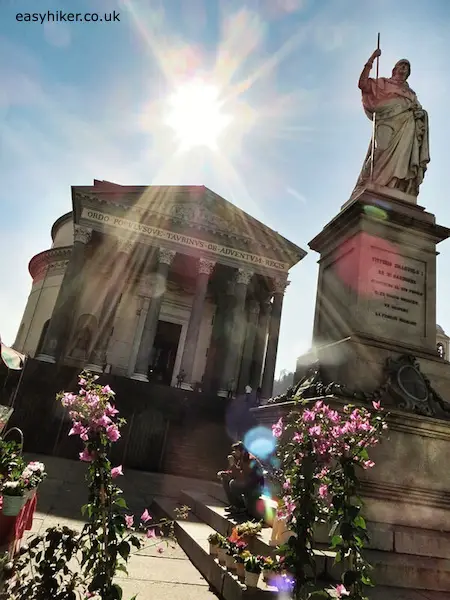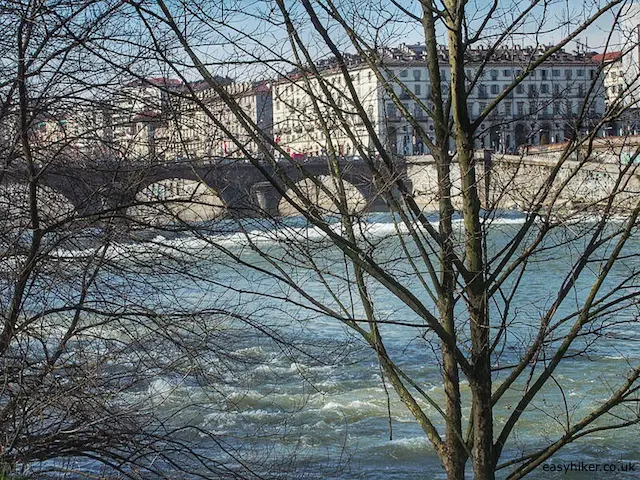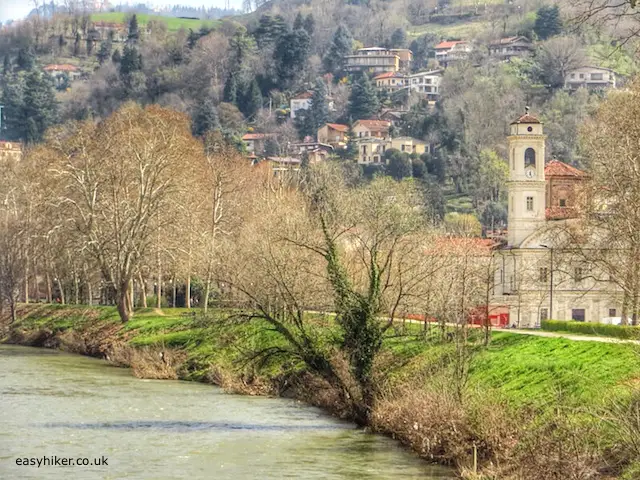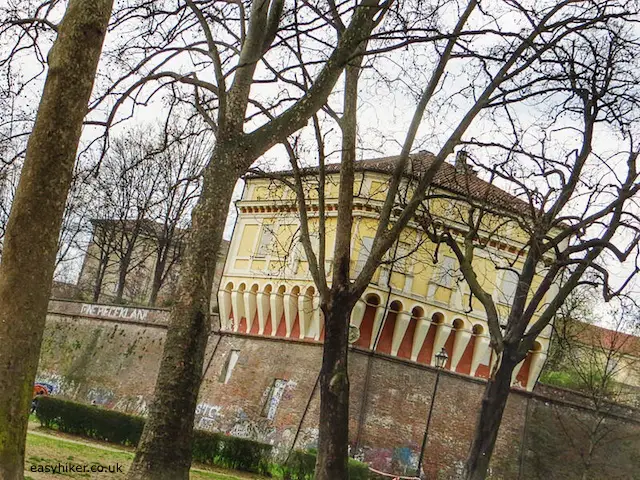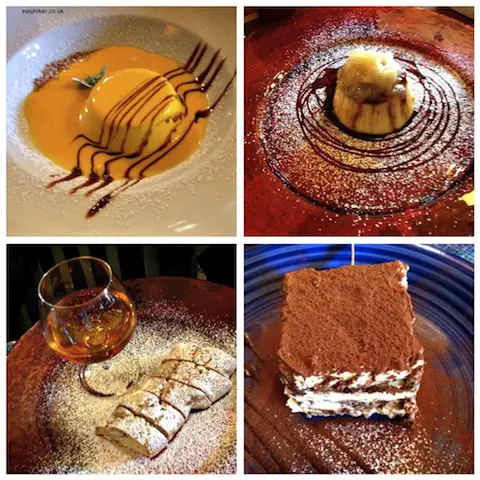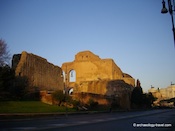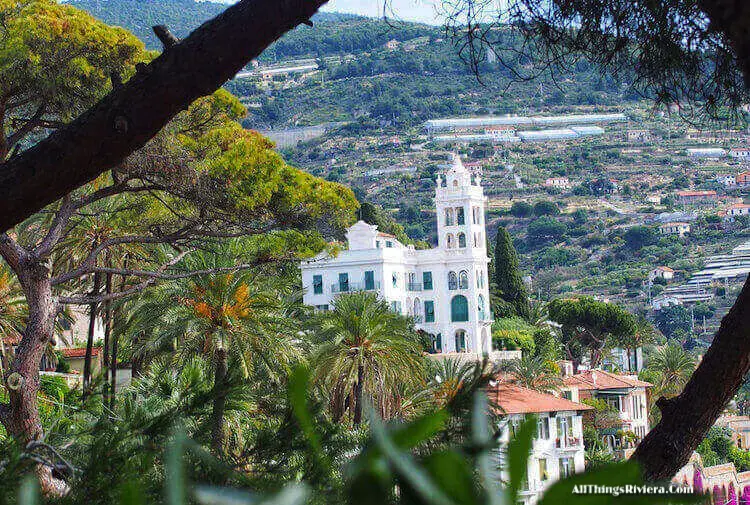The Piemontese hills may provide a picturesque backdrop, but it is in the flat countryside where the city’s lifeblood flows
To the casual observer, it may seem that the countryside in and around Turin is mainly Alpine in nature. The Alps indeed seem to be everywhere …
… but while they undoubtedly attract the eye, even at a distance, they provide no more than a picturesque background, and it is the River Po that is by far the most important feature of the local landscape.
In today’s “country walk”, we will take the time to give it a closer look.
Let’s take that country walk in Turin
We start at the Piazza Veneto, where we finished last week’s town walk. Cross the bridge in front of you towards the Chiesa della Gran Madre di Dio …
… and continue leftward on the river bank.
The Po is not only the longest river in Italy, it is also the main source of water for the country’s agriculture and industry. The river contains huge amounts of water and reaches widths of up to 500 metres – more like the Congo than a European waterway.
Further downstream (the Po flows from west to east, joining the Adriatic Sea near Venice), it carries enough water to irrigate rice fields, and it is no coincidence that Italy’s two most important industrial towns, Turin and Milan, give their factories access to its waters.
The drawback is that the river is fairly unpredictable and has always been prone to flash floods, which is why Turin was not built directly on either side of its banks, like Paris or London, but in a respectful distance away from it.
And which is also why the banks of the river have preserved a bucolic, distinctly non-urban feel.
In theory, you can continue to walk on the river bank for as long as you like, or at least until the point where the Po is joined by one of its many tributaries, the Stura di Lanzo, near the Isola. This island is also an important bird sanctuary, with large colonies of cormorans and herons, particularly in winter.
You will have to walk approx. 5 km from Piazza Veneto until you get there, and then another 5 km back of course, so you probably have to schedule a whole day for that.
For visitors with less time on their hands, we recommend to continue on the Po’s right bank until the Fausto Coppi Velodrome.
This structure was built in the 1920s as a track cycling arena, and has since also served as the place where the (semi-classic) Milan-Turin cycling race finishes. The stadium was later named after the local boy Fausto Coppi, one of the greatest stars of international cycling in the 1950s, who died of malaria on a promotional trip to Africa in 1960, just 40 years old.
Outside the arena, a modern monument has been erected in his honour.
Use the pedestrian bridge to cross the river and return on the other bank in the direction of the town centre. Behind Piazzale Regina Margherita, after about 500 metres, the area on your right hand side is called the Vanchiglia quarter, where, until the mid 19th century, the city’s sewage was collected and turned into fertilizer.
Consequently, as one can imagine, this area was the most notorious of the city, one where criminals and shady characters would congregate in the evenings. The Vanchiglia was thoroughly gentrified from 1850 onwards, when Alessandro Antonelli, the architect of the Mole landmark, built his family home here. Today, it is a handsome residential district, with practically no clues to its insalubrious past.
We leave the river by turning right into Corso San Maurizio. Pay attention to the building on the corner with Via Giulia di Barolo: this is the “Slice of Polenta”, a wedge-shaped residential house with a monumental facade – 27 m high and 27 m wide – but a maximum depth of only a few metres. At its thinnest point, the wedge narrows down to a mere 70 cm.
Continue to the end of the Corso San Maurizio and enter the Royal Gardens, the Giardini Reali, on your left hand side, an interesting mix of formal 17th century gardens – landscaped by Andre Le Notre, the man who designed the gardens of Versailles – and a public park.
One can easily imagine that this must be a great place in summer, with plenty of happy Italian families around and children playing on the lawn, but in March, frankly, it felt a little abandoned.
At any rate, this is where we leave you. Turin city centre – the Piazza Castello – is literally just around the corner.
One last word of advice: if you are looking for a great place to have dinner, after this tiring country walk in Turin, we recommend the Porto di Savona on Piazza Veneto, one of the oldest eateries in town – established in 1863 – and easily one of the most atmospheric, which serves good Piemontese food at reasonable prices (they offer a menu for € 30 p.p.).
To get there, walk back to Piazza Veneto where this walk began, leaving Piazza Castello through Via Po – you should be there in about 20 minutes.


